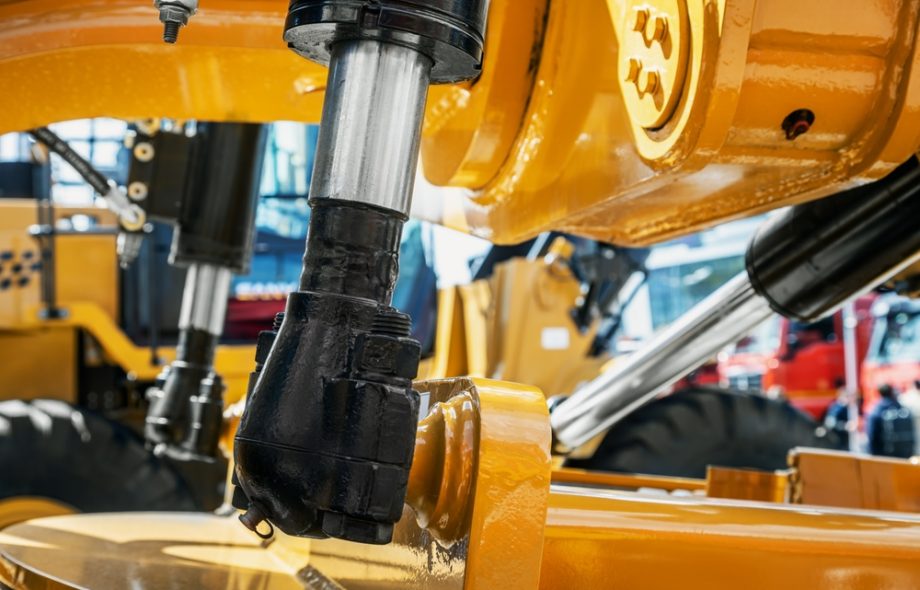Introduction
Hydraulic systems play a crucial role in various industrial applications, including construction, automotive, aerospace, and manufacturing. A key component of these systems is the hydraulic piston seal, which ensures proper fluid containment, prevents leakage, and maintains system efficiency. However, the performance of hydraulic piston seals is significantly influenced by temperature and pressure variations, which can lead to wear, degradation, or failure if not properly managed.
This article explores how temperature and pressure impact hydraulic piston seals, the challenges these factors pose, and best practices for optimizing seal performance under varying conditions.
The Role of Hydraulic Piston Seals in Fluid Systems
A hydraulic piston seal is a type of dynamic seal designed to prevent hydraulic fluid leakage between the piston and the cylinder bore. It maintains the pressure necessary for hydraulic operation while minimizing friction and wear. Hydraulic piston seals must endure extreme conditions, including high pressures, temperature fluctuations, and exposure to hydraulic fluids and contaminants. Understanding how these factors influence seal performance is crucial for maintaining system efficiency and longevity.
The Impact of Temperature on Hydraulic Piston Seals
1. Material Expansion and Contraction
Temperature fluctuations cause materials to expand and contract. Since hydraulic piston seals are typically made from elastomers, rubber compounds, or thermoplastics, these materials exhibit varying degrees of thermal expansion. Excessive expansion can lead to an overly tight seal, increasing friction and wear, while contraction may cause leakage due to insufficient sealing contact.
2. Material Degradation
High temperatures accelerate the aging and degradation of seal materials. Prolonged exposure to excessive heat can cause:
Hardening and Brittleness: Loss of elasticity and flexibility, reducing sealing efficiency.
Softening and Swelling: Excessive deformation, leading to increased friction and extrusion.
Chemical Breakdown: Increased susceptibility to fluid degradation, resulting in material cracks and reduced lifespan.
3. Effect on Lubrication
High temperatures impact the viscosity of hydraulic fluids. A decrease in viscosity reduces lubrication effectiveness, leading to increased friction between the seal and cylinder wall. This friction accelerates wear and shortens seal life. Conversely, low temperatures may cause hydraulic fluids to thicken, increasing resistance and reducing seal movement efficiency.
4. Thermal Cycling Stress
Hydraulic systems that experience frequent temperature fluctuations undergo thermal cycling, which stresses seal materials. Over time, this cycling can cause microcracks, reduced elasticity, and premature seal failure.
Solutions for Temperature-Related Challenges
Selecting High-Temperature-Resistant Materials: Fluorocarbon (FKM), PTFE, and hydrogenated nitrile rubber (HNBR) offer better resistance to heat degradation.
Using Thermal Insulation: Installing heat shields or cooling mechanisms to regulate system temperature.
Monitoring and Maintaining Hydraulic Fluid Quality: Using temperature-stable hydraulic fluids to prevent viscosity-related issues.
The Impact of Pressure on Hydraulic Piston Seals
1. Seal Extrusion and Deformation
High-pressure conditions exert significant force on hydraulic piston seals, which may lead to material extrusion into gaps or clearances within the cylinder. This extrusion can cause irreversible damage, leading to leakage and system inefficiency.
2. Increased Friction and Wear
As pressure increases, the seal is pressed more tightly against the cylinder wall, resulting in:
Higher friction levels, leading to excessive wear.
Increased heat generation, which further contributes to material degradation.
Elevated energy consumption due to greater resistance in the system.
3. Blowout and Sudden Seal Failure
Extreme pressure spikes, such as those caused by hydraulic shock or system malfunctions, can lead to catastrophic seal failure, where the hydraulic piston seal is forcibly ejected from its housing. This event results in immediate system downtime and potential safety hazards.
4. Pressure Cycling and Fatigue
Hydraulic systems often experience pressure fluctuations due to varying load conditions. These cycles subject the seal to continuous expansion and compression, causing fatigue over time. Fatigue can lead to cracks, reduced elasticity, and eventual seal failure.
Solutions for Pressure-Related Challenges
Using High-Pressure-Resistant Materials: Reinforced PTFE, polyurethane, and high-performance elastomers enhance seal durability.
Incorporating Anti-Extrusion Rings: Back-up rings help prevent extrusion by reinforcing the seal against high-pressure forces.
Optimizing Seal Geometry: Designing seals with the appropriate cross-section and profile reduces stress concentrations.
Regular Maintenance and System Monitoring: Periodic inspections and pressure regulation can help detect and address early signs of seal degradation.
Finding the Right Balance Between Temperature and Pressure Resistance
Hydraulic piston seals must withstand both high temperatures and pressures without compromising performance. To achieve this balance, engineers and manufacturers must consider:
Material Compatibility: Choosing seal materials that can tolerate both temperature extremes and high-pressure conditions.
Design Optimization: Implementing advanced sealing profiles that distribute pressure evenly and minimize wear.
Advanced Coatings: Using low-friction coatings to reduce heat buildup and friction-related degradation.
Proper Installation: Ensuring seals are installed correctly to avoid uneven stress distribution.
Conclusion
Temperature and pressure are two of the most critical factors influencing hydraulic piston seal performance. High temperatures can lead to material degradation, loss of lubrication, and thermal stress, while excessive pressure can cause extrusion, wear, and sudden failure. Addressing these challenges requires selecting appropriate materials, optimizing seal design, and implementing preventative maintenance measures.
By understanding and mitigating the effects of temperature and pressure, industries can enhance hydraulic system efficiency, extend seal lifespan, and reduce downtime, ultimately improving overall operational reliability.
 :
https://sabtech.com.sa
:
https://sabtech.com.sa












